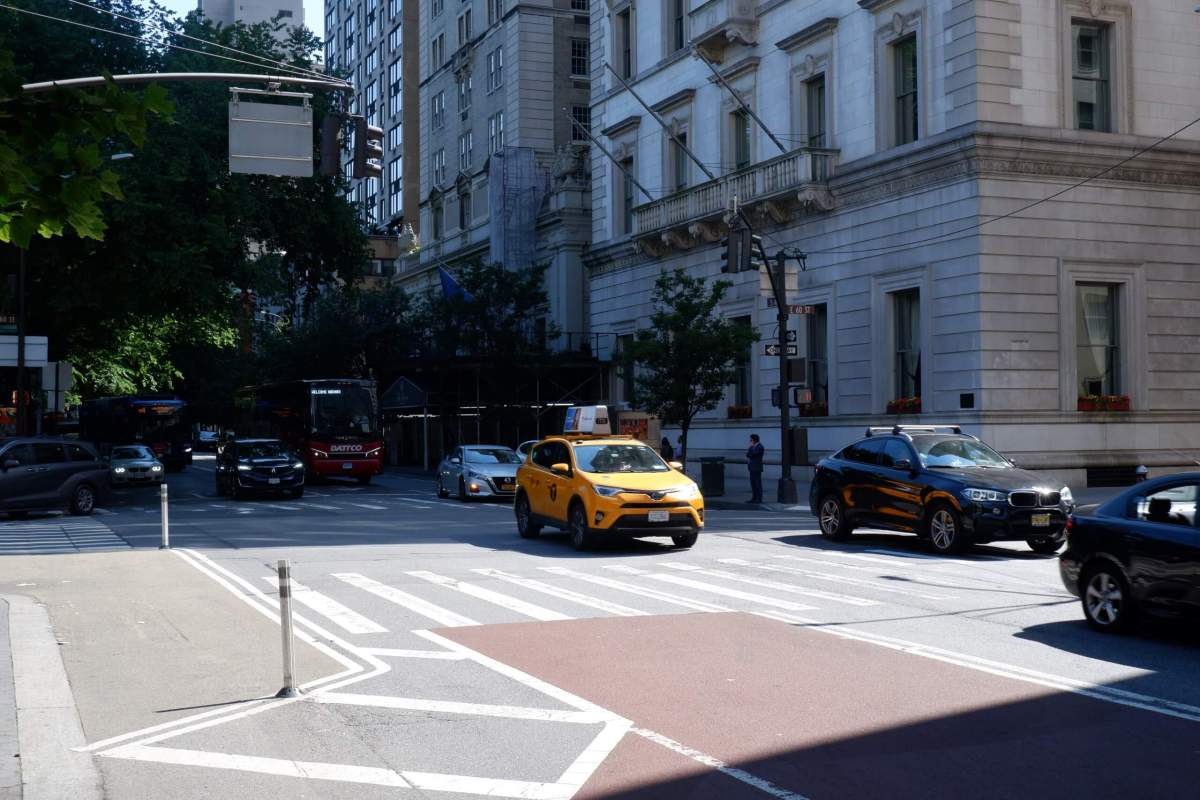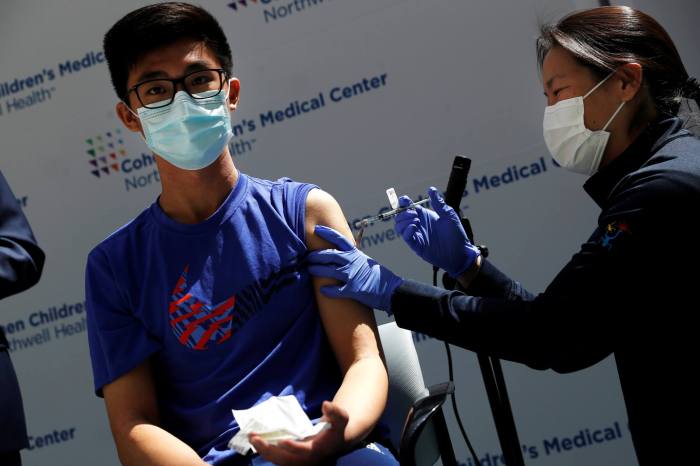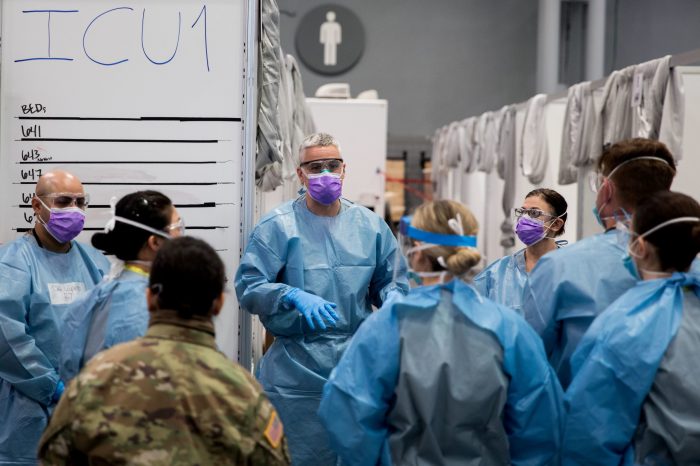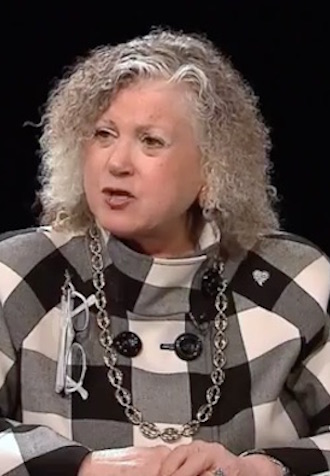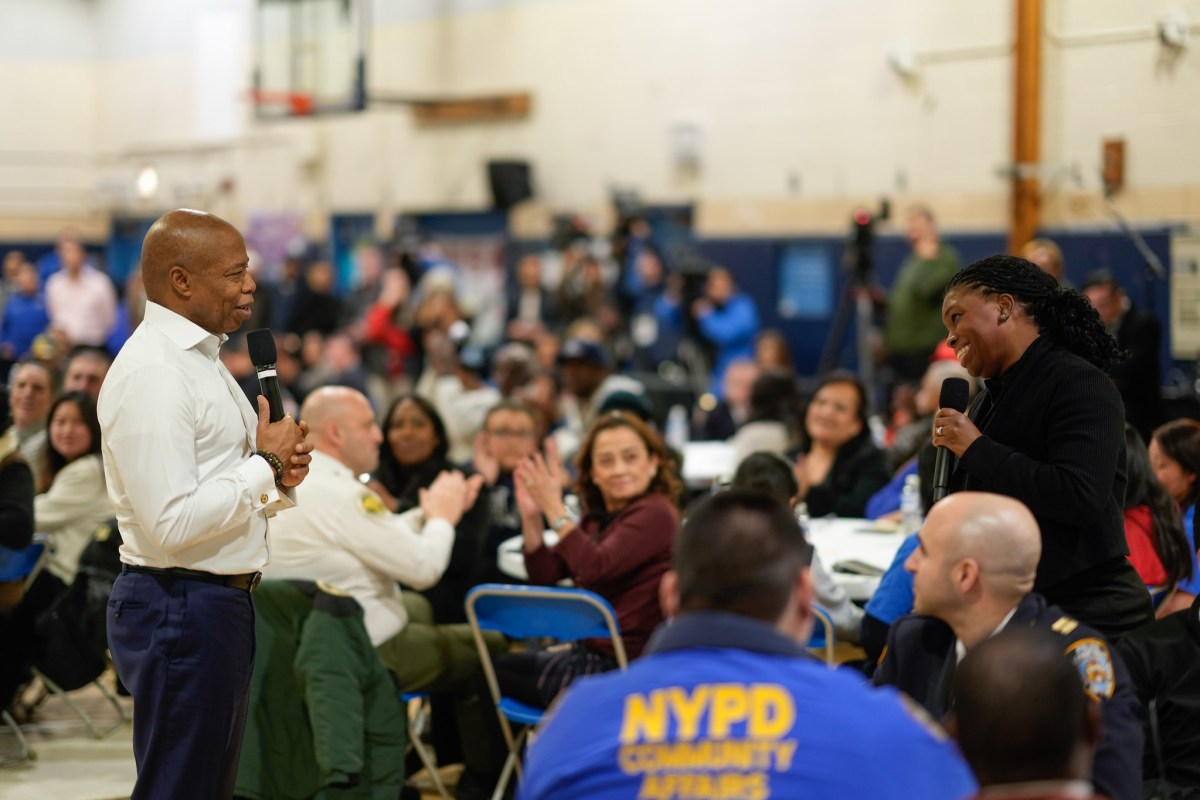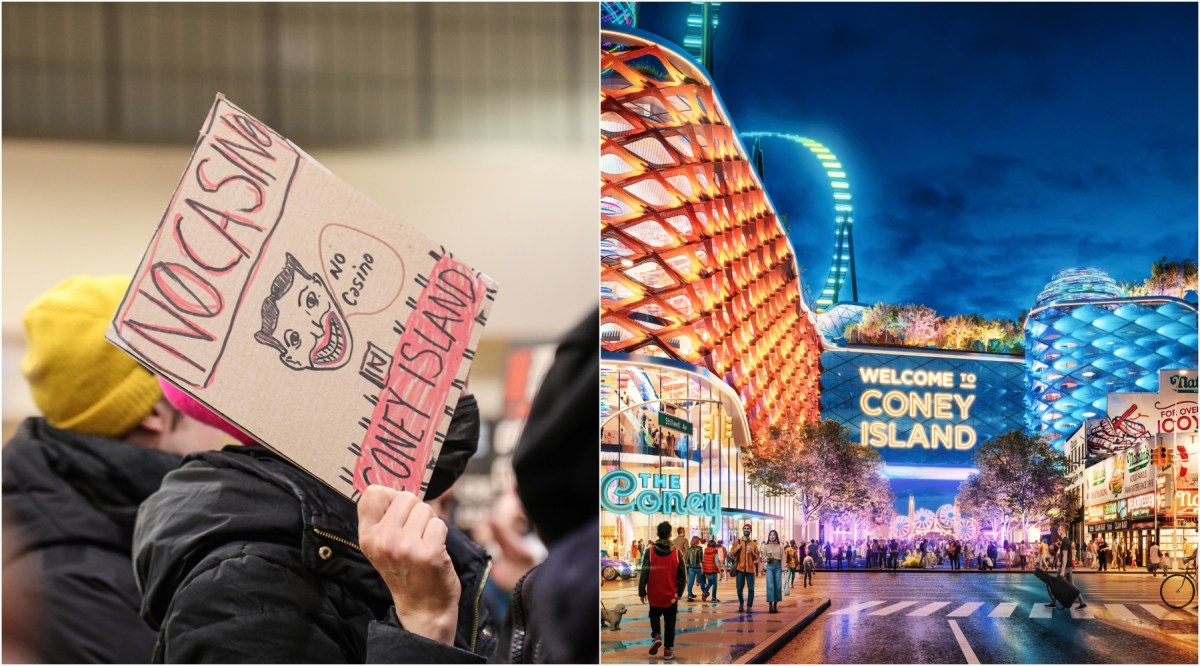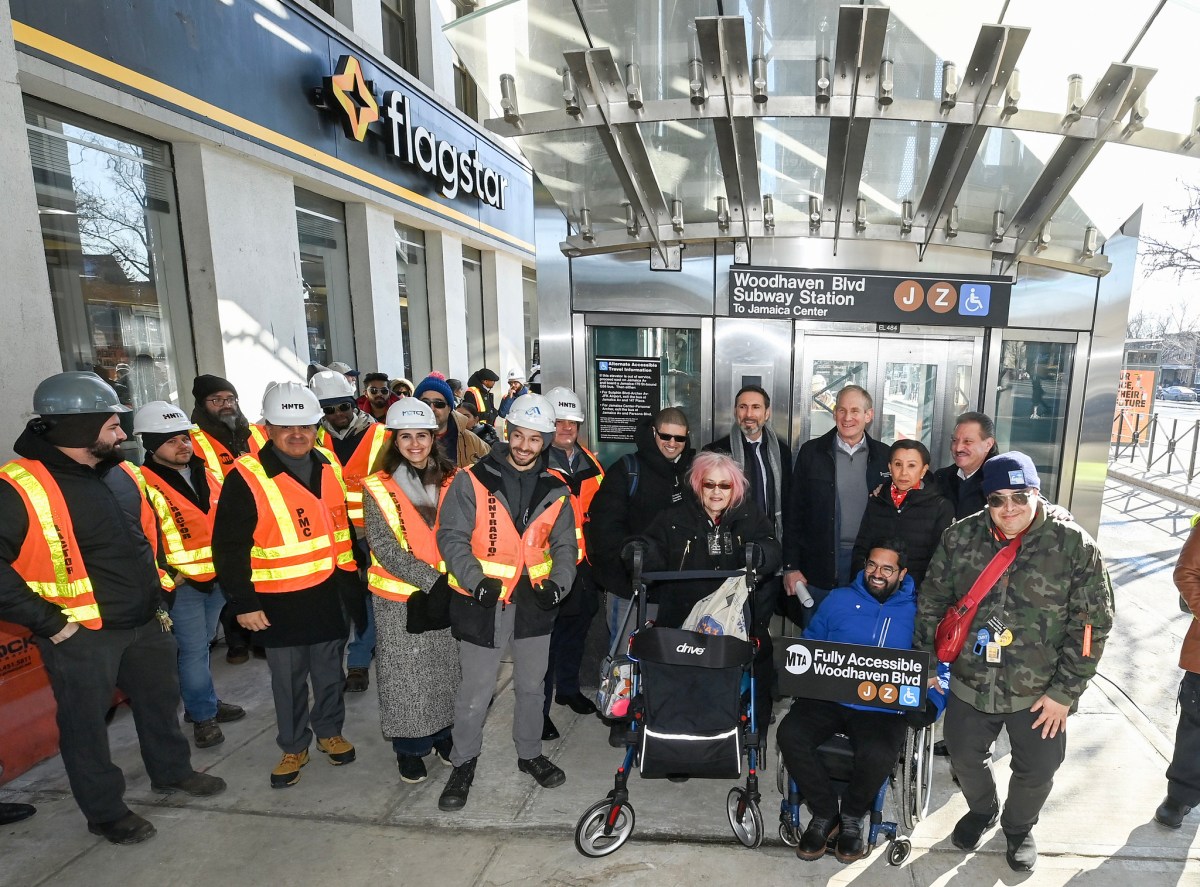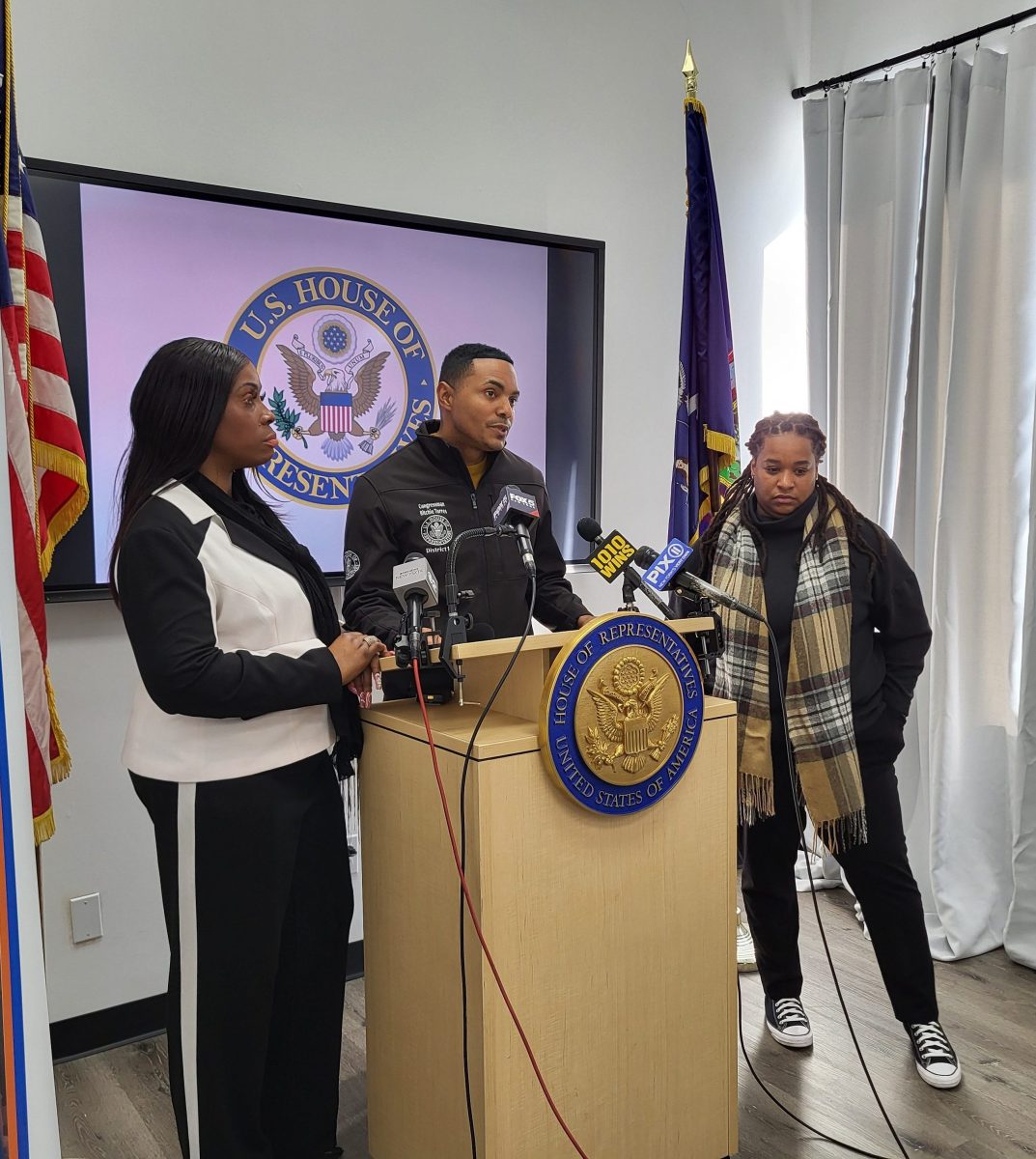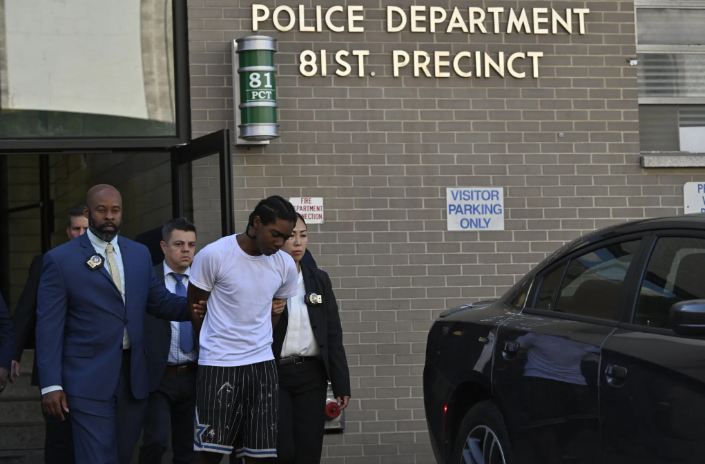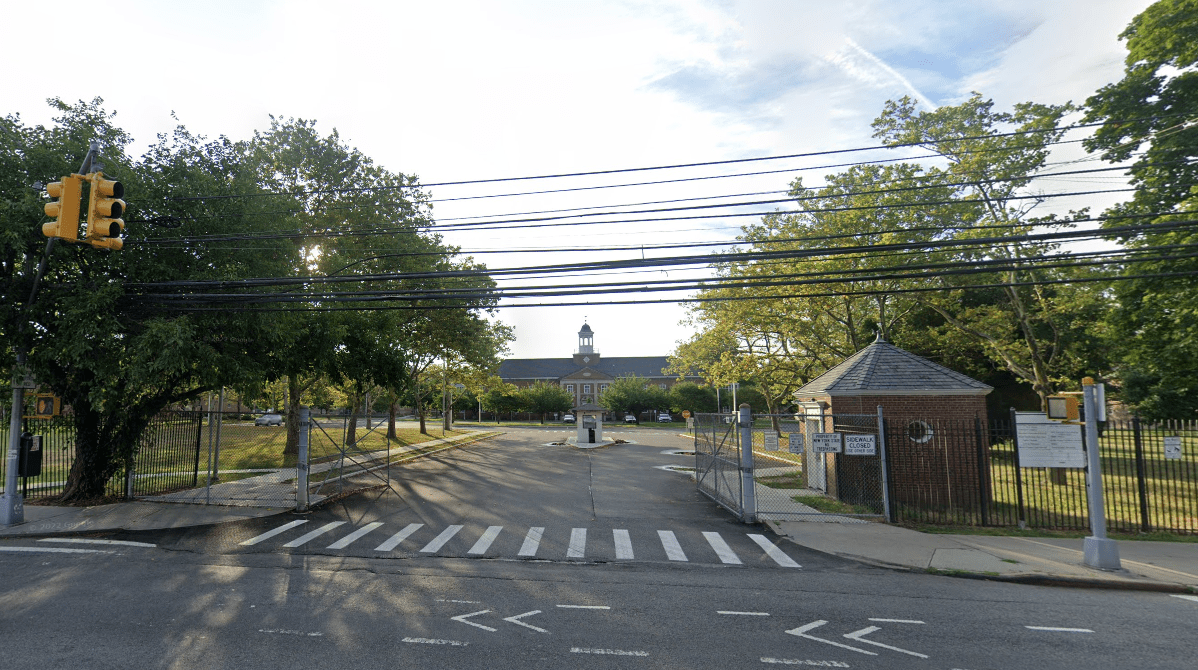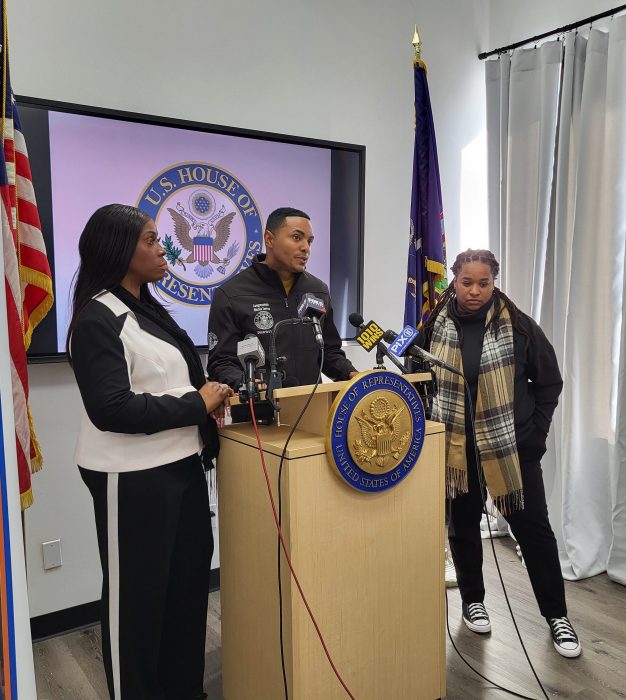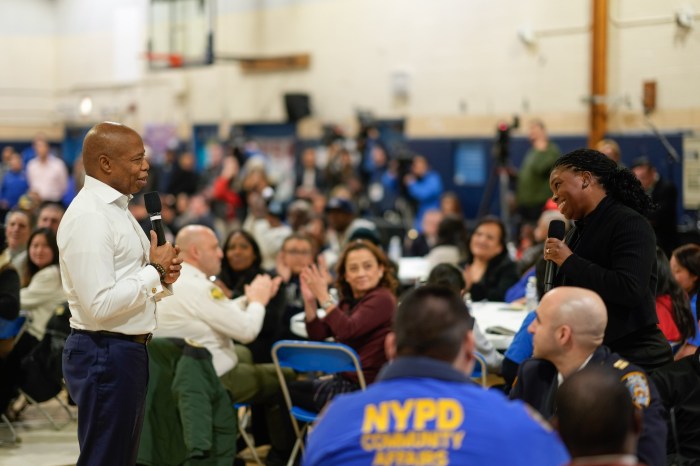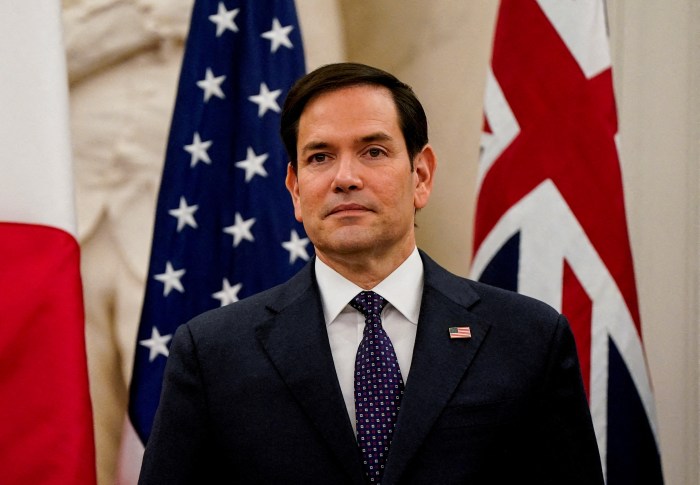Manhattan Borough President Mark Levine wants motorists in the borough’s central business district to pay a lower toll during off peak hours under the MTA’s congestion pricing program.
Levine sent a slate of recommendations to MTA Chair and CEO chief Janno Lieber Wednesday for the charge that is set to launch in 2024.
The Manhattan beep’s proposals include slapping higher charges on motorists going in and out of the congestion zone during rush hours, he told reporters during a press conference at 60th Street and 5th Avenue against a backdrop of honking Midtown traffic.
“That doesn’t mean you’re going to be charged twice for that trip,” Levine said. “But we are calling for a variable pricing system that accounts for people who are entering off or on peak and also accounts for when they exit. We call that two-way charging.”
The variable charges encourage smoother traffic patterns, according to Kate Slevin, executive Vice President of the Regional Plan Association.
“Our own studies show that if you charge a little bit more during the busiest times of day and less — or maybe even nothing — during less busy times of day, that will deliver the best traffic improvements and improve speeds for people traveling through Manhattan,” Slevin said.
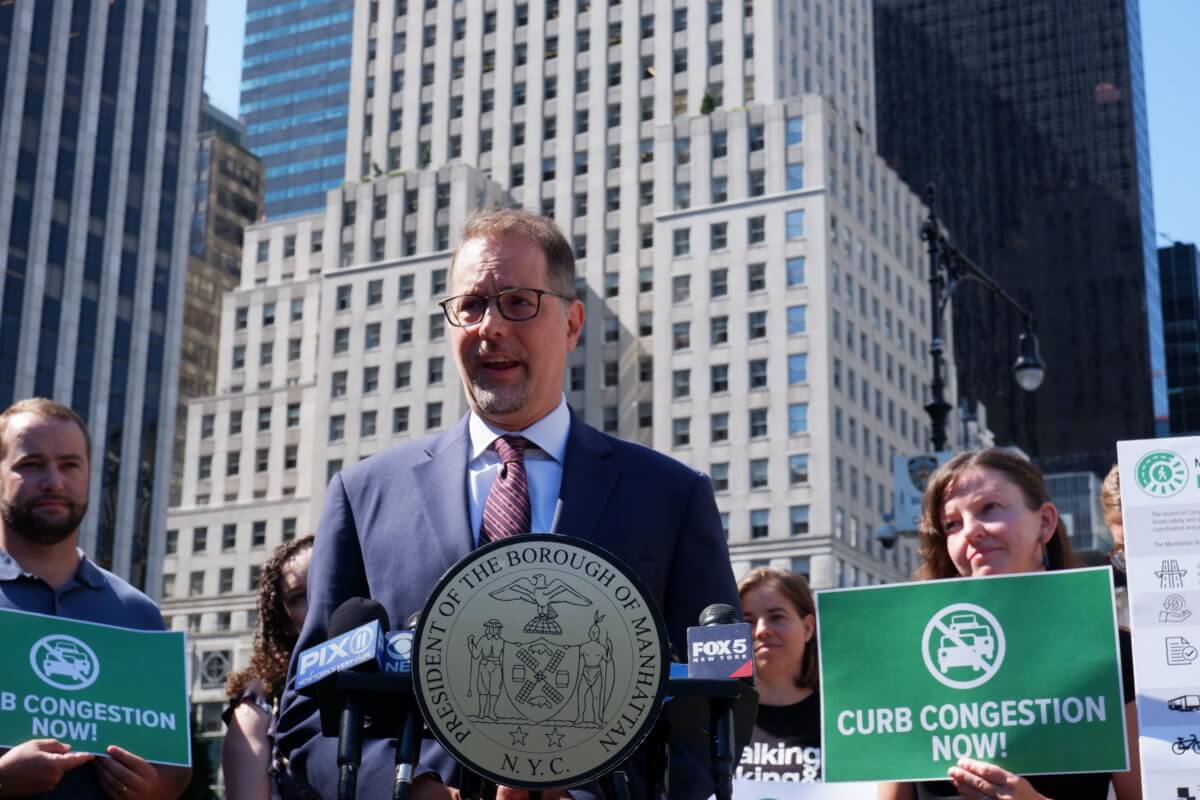
The politician said the Transportation Authority should put higher tolls on people in bigger vehicles, which take up more space and spew out more pollution.
“We want to ensure that smaller vehicles pay a lower congestion fee so that smaller cars pay less than giant SUVs — all of which are of course going to pay less than trucks,” he said.
Taxi and for-hire drivers should not be charged, given that they already pay a $2.50 and $2.75 congestion charge respectively, the beep said.
The city and state must get Manhattan ready for the toll by improving its public transportation infrastructure, restarting the stalled back-door boarding on buses; modernizing the borough’s bus network; and add more bus, bike, and pedestrian infrastructure to the streetscape of the Big Apple.
The MTA expects to generate $1 billion a year once congestion pricing kicks in, and borrow $15 billion against that income stream which is the largest single funding source of its $54.1 billion five-year capital plan to improve its subways and buses.
Congestion pricing was passed by state lawmakers in Albany in 2019 but faced numerous delays during the COVID-19 pandemic and amid a lengthy and opaque federal review process.
Governor Kathy Hochul, who controls the MTA, has also not seemed in a rush to implement the scheme as she runs for election this year, saying that “now is not the right time,” for the toll in a recent debate for the Democratic primary.
“The MTA has continued to forcefully advance the congestion pricing initiative set in motion by the state,” said MTA’s chief spokesperson John McCarthy in a statement. ” We welcome the borough president’s support for a program that will reduce traffic, bring significant environmental benefits, and provide substantial funding for capital initiatives to benefit mass transit.”



